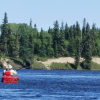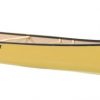Urban Boatbuilders: Building Wooden Canoes for a Rite of Passage
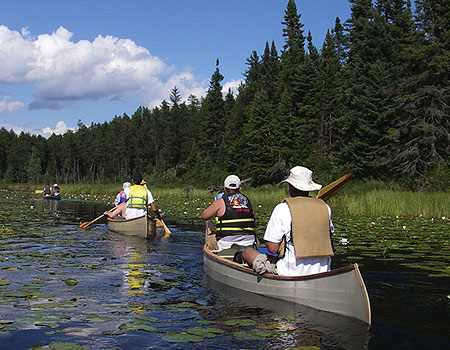
By Phil Winger, photos courtesy of Bob Anderson
Picture yourself venturing out for the first time into the wilderness of the Boundary Waters Canoe Area. Imagine the combination of serenity and wonderment you experience as you ply these pristine lakes and rivers, knowing that you are carrying all you need to survive in a sleek, seventeen-foot, skin-on-frame canoe. Now imagine that you just built that canoe with your own hands over the course of eight days. For six teenage apprentices with Urban Boatbuilders, this was the culminating event in the summer of 2010.
It’s June 21, 2010 and the sun is just coming up. The last thing you might expect from six teenagers at this hour is bustle. But here they are, loading a truck with a steam box, block planes, and neatly stacked pieces of wood. Building wooden canoes is not new to these youths, but this time they know the stakes are higher. They are going to build two canoes at the Como Lake pavilion in St. Paul, under the public gaze of hundreds of strangers. Their goal is to launch them in just eight days. However, the true test, and the standard to which they must build, is that these canoes along with two others they’d previously built are taking them on a five day trip into the BWCAW. Most of these teens have never been camping, some have never left the city, two have never paddled a canoe, but here they are building boats that will carry them into the wilderness.
This event is an opportunity for both the apprentices and the community. These teenagers had been recruited from correctional facilities in the metro area. Building a wooden boat in public gives them an opportunity to showcase a set of unique, positive, skills to average citizens, who in turn, are exposed to an inspiring creative process— building a skin-on-frame canoe. It’s public art with a social conscience.These young adults have probably never been recognized by the citizenry for something positive, which can have a lasting impact on their future choices and behavior. The public, for their part, will perhaps become more open to the possibility that wayward youth are capable of greatness when provided with the right tools.
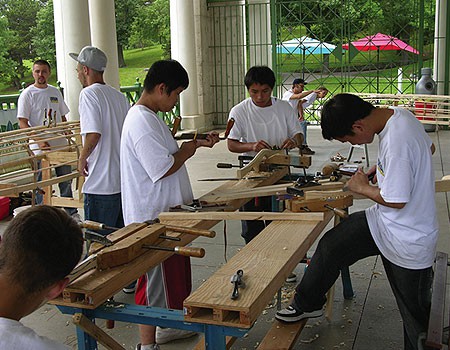
Eight working days after the first rib was bent, a small crowd has gathered at the edge of Como Lake to witness the first real trial of these two strange vessels with lashed wooden framework and translucent skin. A few words of acknowledgment are shared, and the canoes glide out into the water, carrying the builders and their dreams. It is the first on-water experience for a couple of the apprentices, and their first step in preparing for the challenges of a wilderness trip.
Now, flash forward to August 4, 2010. The apprentices are loading gear into their newly-built canoes on the shore of Lake Kawishiwi, near Tofte. By now they’ve refined their paddling strokes, practiced water rescues, and even a couple mock portages in the Midway area of St. Paul. But their mentors have not prepared them for the feeling of those first few minutes, and days, paddling out into the wild. Some things are best learned by the experience alone.
The first day out, there are four short portages, and then suddenly a race against the darkening clouds over Lake Kawaschong to find a campsite. On land, everyone pitches in to get the tents up, and soon, dinner is underway. Before the evening concludes the fishermen in the group catch five fish and Brian reads a short story with everyone huddled around the campfire. It’s not exactly the scene you might picture for six youths on probation.
The next morning one apprentice assumes the role as group leader, responsible for coordinating campsite pack-up, navigation, and set-up in the evening. He is also at least partially responsible for coaxing the crew through the eight portages that bring them to an isolated spot on the Kawishiwi River. It’s a long day, but each apprentice finds it within himself to go the distance, taking turns doubling back on portages to help the team, without prompting. The day ends with some well deserved plunges off a high rocky shore. The trip journal for the night reads:
The next two days of paddling, fishing, and camaraderie pass quickly. The apprentices leave the wilderness with a new sense of their own capability, and the capability of the craft they built. For these youths, the benefits are incalculable, and only time will tell if the wilderness is powerful enough to change the trajectory of a young life.
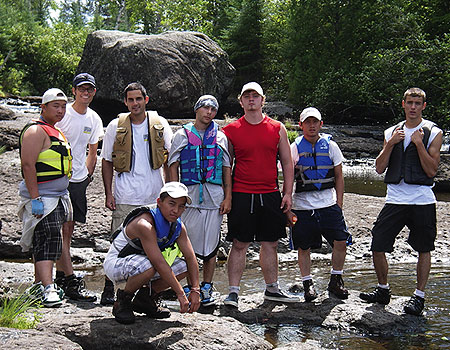
To learn more about the Urban Boatbuilders mission,
visit http://www.urbanboatbuilders.org
Editor’s note. Supporting positive youth development through the building and use of boats, Urban Boatbuilders in St. Paul, Minnesota, is a youth development agency that works with teens and kids-at-risk to build new strengths in their lives.
This article originally appeared in Wilderness News >



